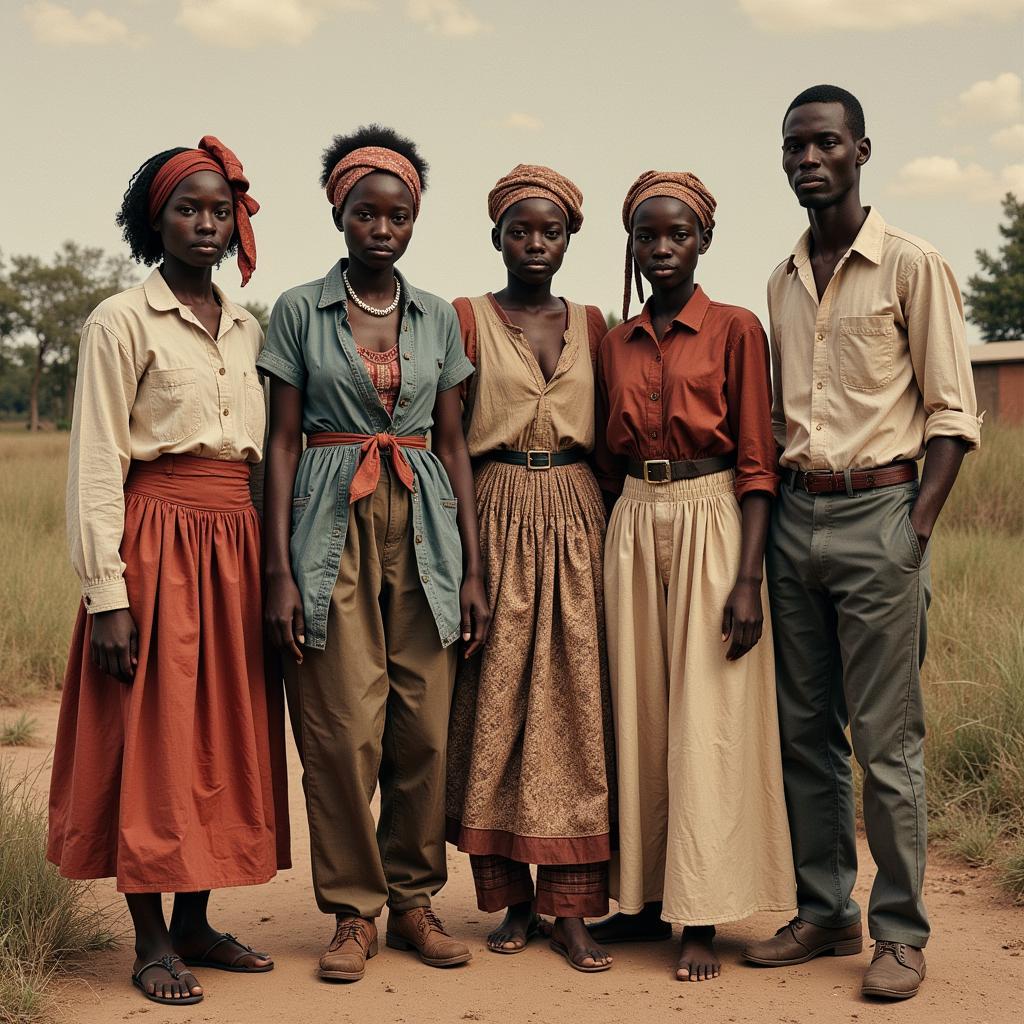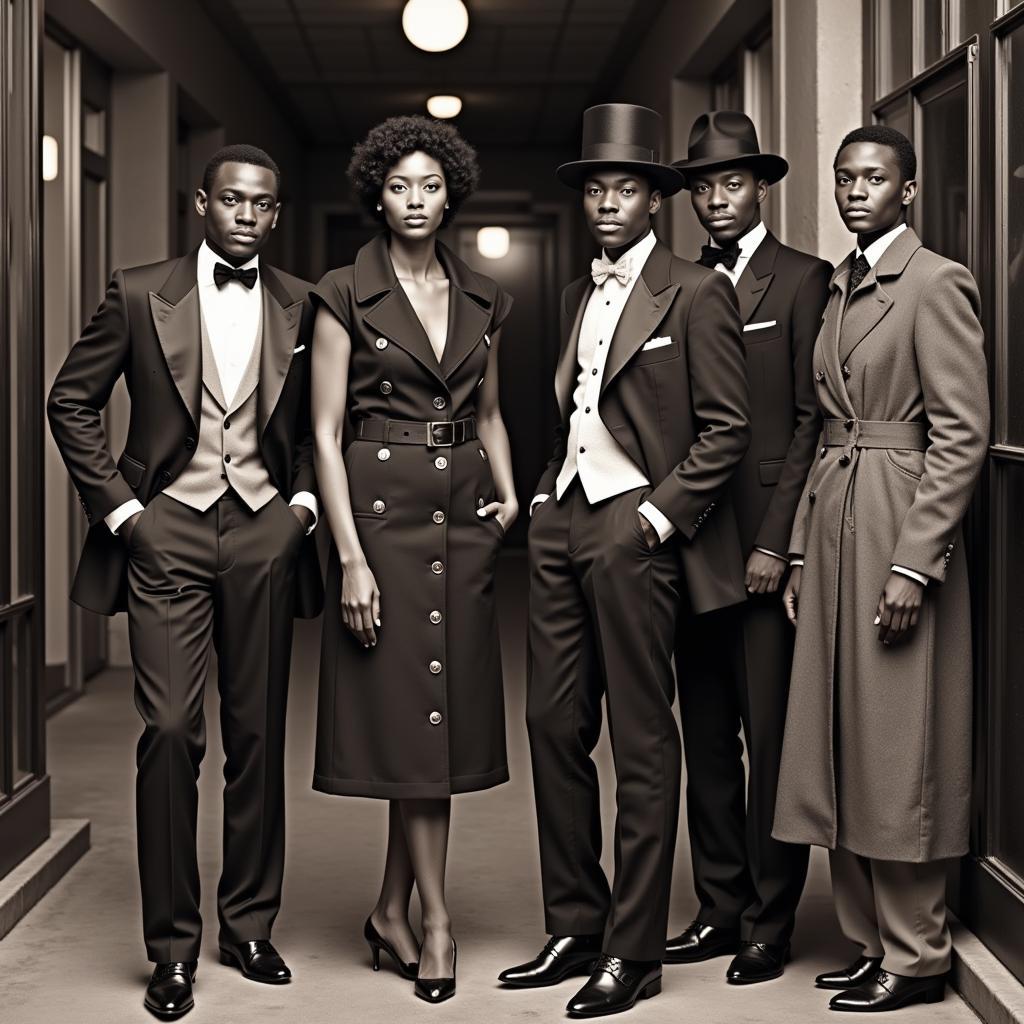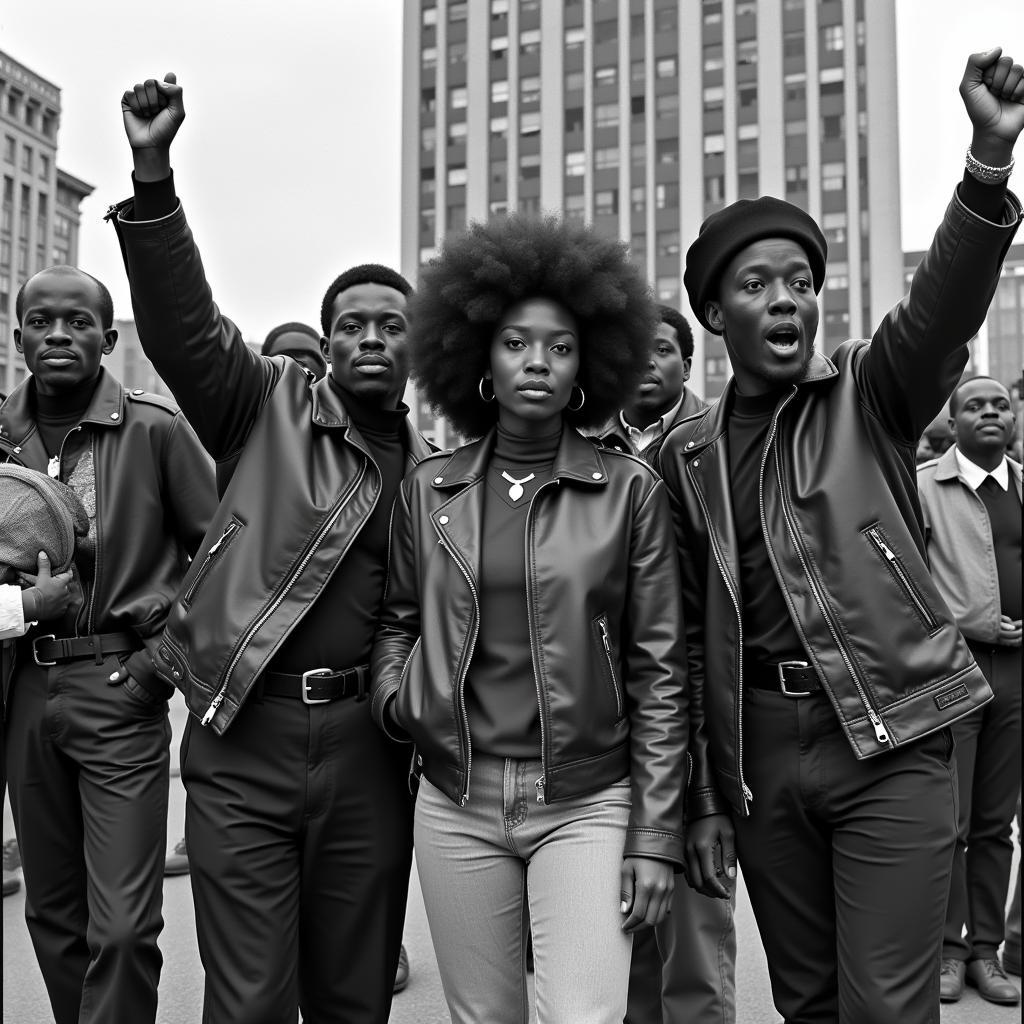African American Clothing History: A Journey Through Style and Struggle
African American Clothing History is a rich tapestry woven from threads of resilience, creativity, and cultural pride. From the forced simplicity of enslaved Africans’ attire to the vibrant expression of the Black Power movement, clothing has served as a powerful tool for communication, resistance, and self-definition. This journey through style and struggle offers a glimpse into the diverse narratives embedded within the seams of African American fashion.
Early Influences: From West Africa to the Antebellum South
 Early African American Clothing: A Blend of Cultures
Early African American Clothing: A Blend of Cultures
The transatlantic slave trade brought millions of Africans to America, stripping them of their freedom and severing ties with their homelands. Despite the brutal realities of slavery, enslaved Africans carried with them their cultural heritage, including traditions of textile production and adornment. West African textiles, known for their vibrant colors and intricate patterns, held deep cultural significance, often reflecting social status, lineage, and spiritual beliefs.
While enslaved Africans were denied the freedom to express their cultural identity openly, glimpses of their heritage could be seen in the adaptation of their clothing. Limited to coarse fabrics and basic garments, they found creative ways to infuse their clothing with meaning, using scraps of fabric to create patchwork designs reminiscent of West African textiles or incorporating elements like headwraps that reflected their cultural practices.
The Birth of a New Identity: From Emancipation to the Harlem Renaissance
 African American Fashion During the Harlem Renaissance: A Celebration of Elegance and Identity
African American Fashion During the Harlem Renaissance: A Celebration of Elegance and Identity
The abolition of slavery marked a turning point in African American history, ushering in a new era of freedom and self-determination. This newfound liberty was reflected in the evolution of African American clothing. Freed from the constraints of slave attire, Black Americans embraced fashion as a means of asserting their newfound identity and social standing. Tailored suits, elegant dresses, and stylish hats became symbols of Black respectability and upward mobility.
The Harlem Renaissance, a period of unparalleled artistic and cultural flourishing in the 1920s, witnessed a vibrant expression of Black identity through fashion. Designers like Ann Lowe, known for her exquisite gowns, and couturiers in Harlem’s thriving fashion scene created garments that celebrated Black beauty and sophistication. The embrace of bold colors, luxurious fabrics, and innovative silhouettes reflected a growing sense of cultural pride and challenged prevailing notions of beauty and style.
Clothing as Resistance: From the Civil Rights Movement to the Black Power Era
 The Power of Dress in the Black Power Movement: A Statement of Unity and Resistance
The Power of Dress in the Black Power Movement: A Statement of Unity and Resistance
The struggle for civil rights and equality in the mid-20th century saw clothing take on new significance as a powerful tool for social change. The Civil Rights Movement, with its emphasis on non-violent resistance, adopted a uniform of respectability. Men and women dressed in their Sunday best, conveying dignity, discipline, and a commitment to equality. This deliberate choice of attire challenged racist stereotypes and aimed to garner respect and recognition from a society steeped in prejudice.
The Black Power movement, emerging in the late 1960s, embraced a more assertive and revolutionary approach to challenging racial injustice. This shift in ideology was reflected in a dramatic transformation of Black fashion. The dashiki, a colorful, loose-fitting tunic originating from West Africa, became a powerful symbol of Black pride and Pan-African solidarity. Afros, natural hairstyles once deemed “unprofessional” by mainstream society, became a bold statement of Black beauty and a rejection of Eurocentric beauty standards. Leather jackets, berets, and military-inspired clothing conveyed a sense of strength, militancy, and a readiness to fight for liberation.
A Legacy of Style and Substance: African American Clothing Today
The influence of African American culture on contemporary fashion is undeniable. From the runways of Paris to the streets of global cities, Black designers, stylists, and influencers continue to shape the fashion landscape. Hip-hop culture, born in the Black communities of New York City, has had a profound impact on global fashion trends, popularizing streetwear, sneakers, and a more relaxed and expressive approach to style.
African American clothing today reflects the diversity and dynamism of Black experiences. It is a celebration of heritage, a platform for self-expression, and a testament to the enduring power of clothing as a form of communication and resistance. From the bold prints and vibrant colors inspired by African traditions to the streetwear styles that have become synonymous with Black youth culture, African American fashion continues to evolve, reflecting the ever-changing realities of Black life in the 21st century.

